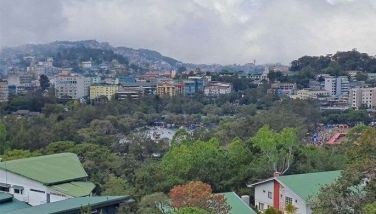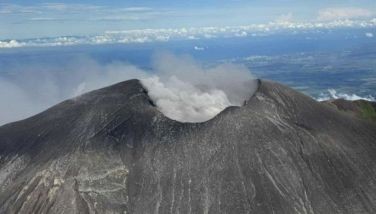Eclipse shrouds Asia in darkness
MANILA, Philippines - The longest solar eclipse of this century pitched a swath of Asia from India to China into near darkness yesterday as thousands also gathered in the Philippines to watch the phenomenon in the streets.
Over a hundred astronomy enthusiasts went to the Philippine Atmospheric, Geophysical and Astronomical Services Administration (Pagasa)’s Astronomical Observatory at the University of the Philippines in Diliman, Quezon City to witness the phenomenon that was seen as a partial solar eclipse in the country.
Across Asia, millions watched as darkness plunged India and China where a total solar eclipse was witnessed.
Pagasa weather specialist Renato de Leon said the solar eclipse was the longest, beginning from 8:33 a.m. to 11:01 a.m.
De Leon said the viewing of the partial total eclipse in the Philippines was “successful” as the skies cleared an hour before the eclipse ended.
“Metro Manila experienced the maximum coverage for the country at 49.7 percent or almost 50 percent,” De Leon said.
De Leon said they set up a refracting telescope at the Pagasa Observatory that they usually use in viewing the solar eclipse.
He said observers included students, media men and members of local astronomical societies and their families.
The Planetarium at the Luneta Park in Manila also installed viewing telescopes for students and interested public to witness the celestial event.
National Museum’s Planetarium division acting curator Ma. Belen Pabunan said the Philippines was able to experience the partial solar eclipse of the Aros cycle.
Pabunan said the eclipse is considered to be the longest that occurs every 18 years.
In Mindanao, yesterday’s eclipse was witnessed in a brief moment.
Residents in Zamboanga City said the eclipse was barely witnessed, lasting only a few minutes.
Not even the ancient believers, who usually expressed fears and apprehension of the eclipse occurrence, took notice of the phenomenon.
Superstitions though still abound as some folks made noise to allow “the moon to spew out the sun.”
Brenda Nazarette-Manzano, regional director of the Department of Science and Technology (DOST) described the eclipse viewed down south as “a small bite of a donut ring.”
The eclipse is caused when the moon covers the sun completely to cast a shadow on earth. In some parts of Asia it lasted as long as six minutes and 39 seconds.
In India, the solar spectacle caused millions, gripped by fear, to shutter themselves in, fearful of the effects of the lunar shadow, which some believe can lead to birth defects in pregnant women.
India abounds in superstitions and fables based on Hindu mythology, one of which says an eclipse is caused when a dragon-demon swallows the sun.
Thick cloud cover over India obscured the sun when the eclipse began at dawn. But the clouds parted in several cities, minutes before the total eclipse took place at 6.24 a.m. (0054 GMT; 8:54 p.m. EDT).
In neighboring Bangladesh, people came out in droves.
Motorists in Panchagarh town from the capital Dhaka needed to use headlights as “night darkness has fallen suddenly.” People hugged each other and some blew whistles when the eclipse began.
One of the best views, shown live on several television channels, appeared to be in the Indian town of Varanasi, on the banks of the Ganges River, sacred to devout Hindus.
Thousands of Hindus took a dip in keeping with the ancient belief that bathing in the river at Varanasi, especially on special occasions, cleanses one’s sins. The eclipse was seen there for three minutes and 48 seconds.
The eclipse - visible only in Asia - was moving north and east from India to Nepal, Myanmar, Bangladesh, Bhutan and China.
It is the longest such eclipse since July 11, 1991, when a total eclipse lasting 6 minutes, 53 seconds was visible from Hawaii to South America. There will not be a longer eclipse than yesterday until the year 2132.
The last total solar eclipse was on Aug. 1 last year and also crossed China.
The next will be on July 11, 2010, but will occur almost entirely over the South Pacific, where Easter Island — home of the legendary Moai giant statues — will be one of the few landfalls.
“We’ll have to wait a few hundred years for another opportunity to observe a solar eclipse that lasts this long, so it’s a very special opportunity,” said Shao Zhenyi, an astronomer at China’s Shanghai Astronomical Observatory.
Superstition has always haunted the moment when Earth, moon and sun are perfectly aligned. The daytime extinction of the sun, the source of all life, is associated with war, famine, flood and the death or birth of rulers.
The ancient Chinese blamed a sun-eating dragon. In Hindu mythology, the two demons Rahu and Ketu are said to “swallow” the sun during eclipses, snuffing out its light and causing food to become inedible and water undrinkable. –With Roel Pareño, AP
- Latest
- Trending




























